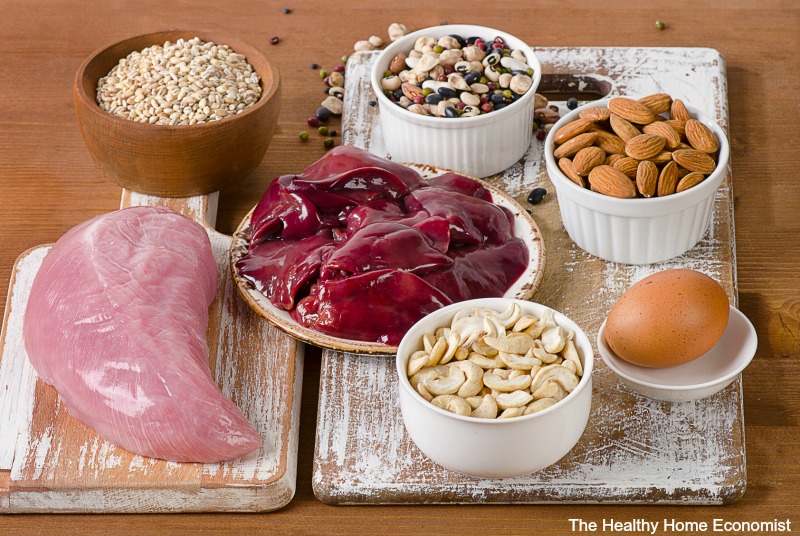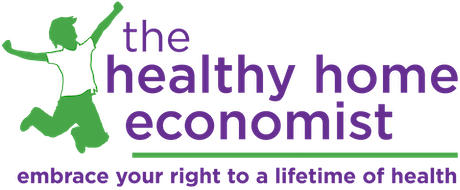Table of Contents[Hide][Show]

The importance of minerals in skincare has been severely overlooked, especially in comparison to the attention vitamins for skin receive. Minerals are essentially the “spark plugs” of the body, carrying out important bodily functions through enzyme reactions. They facilitate the transfer of nutrients across cell membranes with important assistance from vitamins.
In addition, they maintain PH balance and proper nerve conduction, contract and relax muscles, provide structural support, and regulate tissue growth. As you can see, minerals are a must to maintaining a healthy functioning body, but also to maintain healthy vibrant skin.
We need a variety of minerals, and the best place to get these is through consuming a clean whole foods diet with an array of high quality foods. Having a focus on skin in my practice, many of my clients who initially come to me are deficient in minerals in general, but in particular ones that can be extremely helpful in repair and maintenance of skin. If you’re struggling with a skin condition, such as acne, you may want to consider focusing on the minerals discussed below.
Zinc
Zinc has a variety of important functions, and is also probably the most common deficiency I see in people. Zinc is needed for proper growth, supporting immunity, balancing proper blood sugar and metabolic rate, and plays a large role in promoting prostate health.
It also has incredible benefits in healing and repairing damaged skin, including wound healing, and because it is also an antioxidant, it protects against UV radiation. Just to be clear, I am an advocate of the sun and getting your vitamin D naturally, although there is a difference between sun exposure and abuse.
If you know you are going to be out for hours in the summer particularly, a zinc sunscreen like zinc oxide would not be a bad idea. It is available in it’s pure form, which you may recognize from the traditional white patches athletes like surfers use, although this is not the most attractive, nor discrete when out in public.
Zinc oxide is now available in a clear form that doesn’t have the chemicals and harmful ingredients that traditional sunscreens contain. It is also important to note that zinc regulates the release of vitamin A from the liver (another important skin nutrient). In regards to acne, zinc is especially helpful working as an anti-inflammatory agent, helping in prevention of breakouts but also decreasing scarring.
Because zinc can help reduce the amount of sebum (natural oil) your skin produces, some research has found that those with acne have a lower intake of zinc in their diet than those without acne.
Both past and recent research have shown that additional zinc intake is a great way to help control acne symptoms:
A 2000 study published in the European Journal of Dermatology found that taking zinc supplements helped to treat inflammatory acne, according to the University of Pittsburgh Medical Center. Another double-blind clinical trial published in the British Journal of Dermatology in 1977, discovered that zinc supplements were equally effective as oxytetracycline, an oral antibiotic sometimes prescribed for treating acne.
Food sources of zinc are best absorbed from animal sources if a deficiency is present, as animal foods are better absorbed without the phytates that zinc sources from plants have.
Simple Test for Zinc Deficiency
The current percent daily value for zinc is 15 mg, but therapeutic doses may be needed in higher amounts. A good way to test your levels is by doing a simple zinc taste test at home.
Take a small amount of liquid zinc (about 1 teaspoon) in your mouth for up to 30 seconds. If you immediately taste something other than water, such as a metallic bitter taste, this can indicate good zinc status. The longer it takes within those 30 seconds to taste something other than water, the more deficient you may be.
Best food sources of Zinc
- Oysters and other shellfish
- Veal Liver
- Roast Beef
- Lamb
- Pumpkin Seeds especially if soaked or sprouted
Sulfur
Sulfur is the third most abundant mineral in the human body, present in every cell, with its greatest concentration in hair, skin and nails. Like zinc, many people are likely eating a diet deficient in sulfur. That alone can cause initial skin symptoms.
Traditionally, dermatologists recommend topical sulfur ointments for treating acne, dermatitis, rosacea, eczema and even dandruff. Topical uses of sulfur date as far back as Hippocrates and even the Romans. Sulfur preparations and sulfur springs were used to treat skin problems, relieve pain and to prevent aging.
According to the University of Pittsburgh Medical Center, sulfur appears to assist in shedding excessive skin. Insufficient shedding can be responsible for blocking pores and creating the ideal environment for bacteria to thrive.
Sulfur works great at fighting bacteria, clarifying the skin, minimizing pores, as well as preventing and healing damage caused by blemishes. Hence, it can be very helpful for those who have acne.
Dietary sulfur significantly affects the collagen production in our skin, which in turn supports its structure and strength, decreasing the onset of wrinkles. For an additional way to support collagen growth, gelatin from pasture-raised animals is a great food source to include in any healthy skin diet.
Best food sources of Sulfur
- Grass-fed pastured meats, like beef and chicken
- Pastured eggs
- Garlic
- Onions- The more potent and stronger the smell and effect (think eyes watering), the more sulfur they contain!
- Brussel sprouts
- Asparagus
- Kale
- Fermented cruciferous vegetables, such as traditionally prepared sauerkraut
Selenium
Selenium is a powerful antioxidant, paired with natural vitamin E (another antioxidant) helps to boost glutathione production in the body, which can potentially help to decrease and control acne.
Like Zinc, people who have acne typically have low levels of selenium as well. The combination of antioxidants can create a great anti-inflammatory effect and fight off free radicals.
It’s worth mentioning that copper also helps to enhance the function of antioxidants, protecting skin from overall oxidative damage which can lead to progressive aging, scarring, and a dull complexion.
The mineral content in food is heavily dependent on the quality of the soil, another reason to shop organic and local. Even then though, soils in some parts of the world naturally contain more selenium than others.
In the United States, Nebraska and North and South Dakota have high levels of selenium in the soil. Russia and China have low selenium levels.
If you eat a whole foods diet you should get enough selenium, however, if you do or have any of the following, this can also lead to selenium deficiencies.
- Smoke cigarettes
- Drink alcohol
- Take birth control pills
- Have a condition that prevents your body from absorbing enough selenium such as Crohn’s disease, IBS, ulcerative colitis, or any chronic digestive issue
Best Food Sources of Selenium
- Organ Meats
- Fish, such as sardines and salmon are particularly high
- Pastured Meats- beef, turkey, lamb
- Liver
- Brazil nuts– Just 2-3 nuts will get you to your daily intake value. Make sure you soak and sprout to reduce the phytate content and make the selenium more available.
So now we have covered vitamins, minerals, and antioxidants within these that are especially helpful to manage skin problems and maintain healthy skin.
Focus on these food sources for a good month or two and see the improvement!
If you are worried about the quantity of overall minerals in your food or diet (or suspect malabsorption), a great insurance policy I recommend is a liquid mineral supplement. In addition to providing trace minerals in balance with each other, it also helps keep you hydrated and maintain energy.
If this is still not enough, I will soon be covering what other areas you may need to take a deeper look at, beyond just nutrients, that can help in achieving your healthy skin goals!
Sources
(1) Efficacy and safety study of two zinc gluconate regimens in the treatment of inflammatory acne
(2) Selenium Fact Sheet
(3) Sulfur in Health and Disease








Hi Carla,
I am curious… how does sulfur assist in shedding skin cells? By internal ingestion or external application?
Best Regards
Can be acquired by way of health supplements if not eating adequate fruits or vegetables
Hello, great article!
Thanks for the info.